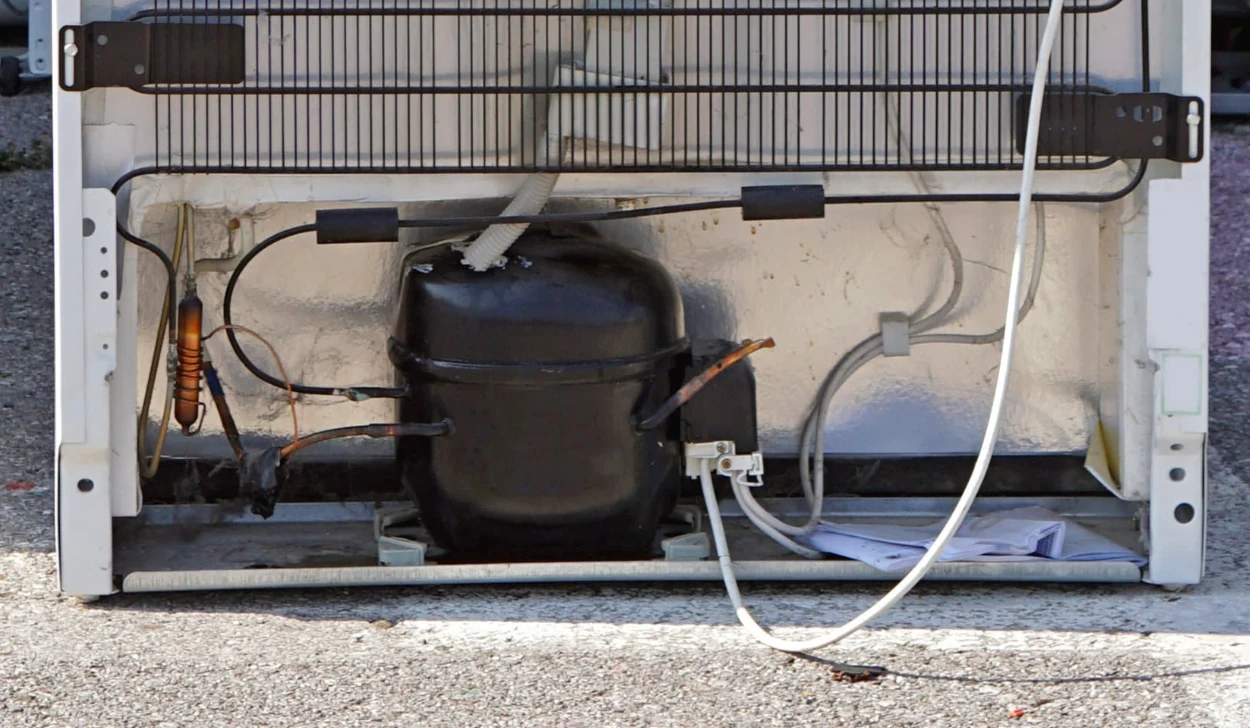It’s perfectly normal for your freezer compressor to feel warm to the touch.
This heat is a byproduct of the refrigeration process. However, a scalding hot compressor is a cause for concern.
This article will explain the refrigeration cycle, describe the function of each component, and outline potential problems associated with an excessively hot compressor, including burn risks, fire hazards, and damage to the freezer’s exterior.
Why is Your Freezer Compressor Hot to Touch?
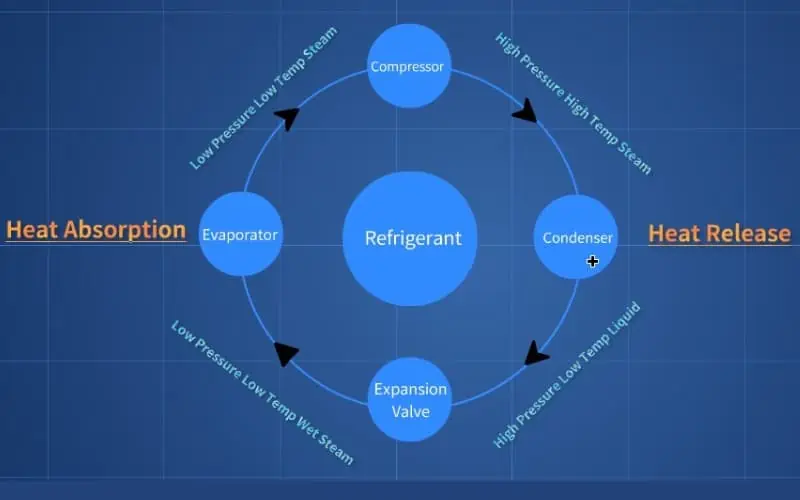
The cooling process within a freezer relies on the principles of thermal expansion and compression of a refrigerant fluid.
This cycle involves the transfer of heat, ultimately resulting in the cold temperatures inside the freezer compartment.
1) Components of a Freezer
A freezer typically comprises four main components:
- Compressor
- Condenser
- Expansion Valve
- Evaporator
1.1) Compressor
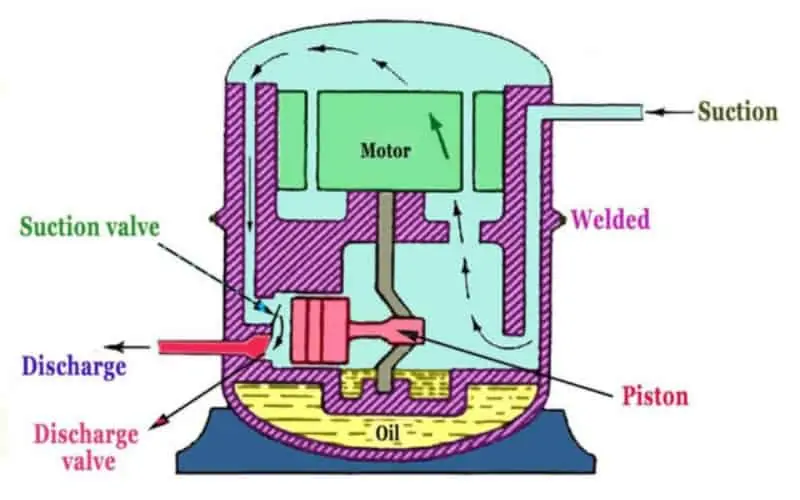
The compressor is the starting point of the refrigeration cycle.
It receives the refrigerant in a gaseous state and compresses it, significantly increasing both its pressure and temperature.
This compression forces the refrigerant molecules closer together, effectively converting the gas into a hot, high-pressure liquid. The act of compression generates heat due to increased molecular collisions.
1.2) Condenser
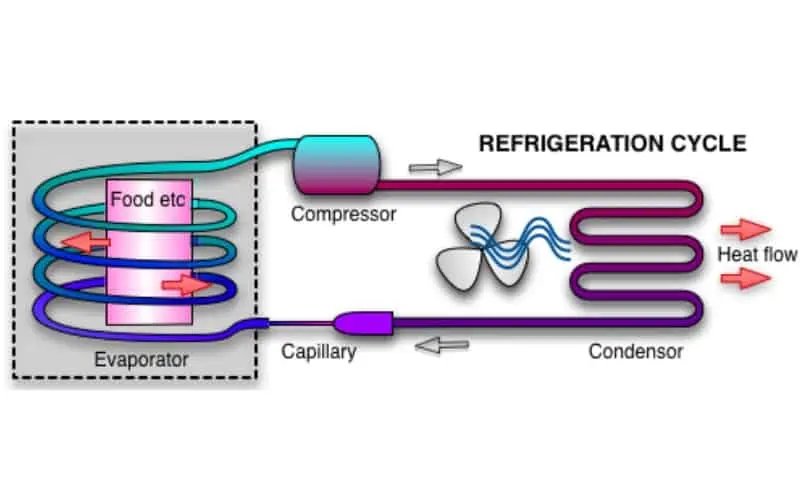
The hot, high-pressure refrigerant then travels to the condenser, usually located at the back or underside of the freezer.
Here, the heat is dissipated, transforming the hot gas into a high-pressure liquid. The condenser’s primary function is to release heat, causing a phase change in the refrigerant.
1.3) Expansion Valve
Next, the high-pressure liquid refrigerant passes through the expansion valve.
This valve creates a sudden drop in pressure, causing the liquid to rapidly expand and vaporize. This expansion results in a significant decrease in the refrigerant’s temperature.
1.4) Evaporator
The cold, low-pressure refrigerant vapor now enters the evaporator, a set of coils located inside the freezer compartment.
As the refrigerant circulates through these coils, it absorbs heat from the freezer’s interior, further cooling the space. The refrigerant then returns to the compressor to repeat the cycle.
Now What To Do if Your Freezer Compressor Is Too Hot?
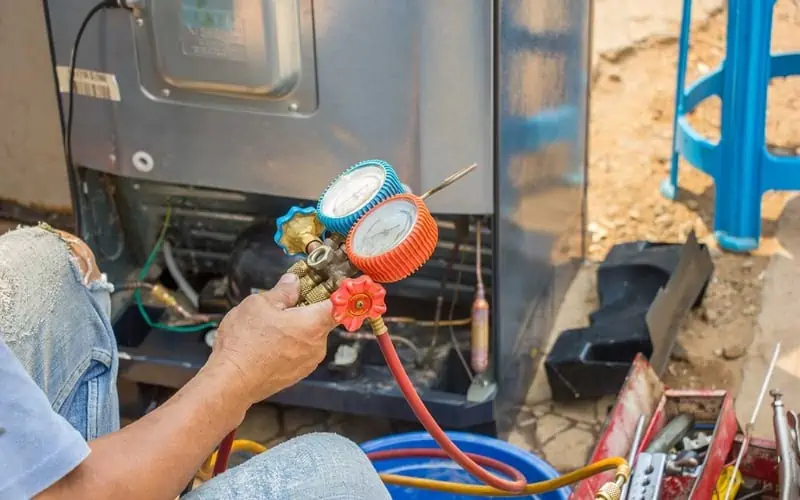
While a warm compressor is normal, an excessively hot one is a sign of a potential problem. Several factors can contribute to overheating:
- Dirty compressor coils
- Malfunctioning thermostat
- Issues with other freezer components
- Compressor damage
- Low refrigerant levels
- High ambient temperature
If your compressor is excessively hot, consult a qualified technician to diagnose and resolve the issue.
Issues Caused by an Overheated Freezer Compressor
An overheated freezer compressor can lead to various problems:
1) Burn Risk
A freezer compressor operating at excessively high temperatures presents a significant burn risk.
The surface of the compressor can become hot enough to cause immediate and painful burns upon contact. This danger is particularly acute during routine cleaning or maintenance of the freezer, when accidental contact is more likely.
In households with young children, the risk is amplified. Children, naturally curious and often unaware of potential dangers, may touch the hot compressor, resulting in serious injuries.
2) Fire Hazard
In extreme cases of overheating, a freezer compressor can pose a fire hazard.
If the compressor reaches a sufficiently high temperature, it can ignite nearby flammable materials. This risk is heightened if the freezer is situated close to curtains, paper, cardboard, or other combustible items.
A telltale sign of potential overheating and a developing fire hazard is the presence of scorch marks on the wall or surrounding surfaces near the compressor.
If you notice scorch marks, it’s essential to address the issue immediately and consult a qualified technician to prevent a fire.
3) Exterior Damage
The excessive heat generated by an overheated compressor can cause significant damage to the freezer’s exterior.
Many freezers, especially modern models, incorporate plastic components in their construction. Plastic, while cost-effective and lightweight, is susceptible to damage from high temperatures.
This damage not only detracts from the freezer’s appearance but can also compromise its structural integrity.
For instance, if the plastic components near the freezer’s legs are affected, the freezer may become unstable and prone to tipping. Such instability poses a safety risk, as a toppling freezer can cause injuries or damage surrounding property.

Abdul Kader, a handy guy and experienced founder of a TV repair shop in Gulshan, Dhaka, Bangladesh. He is mainly an expert in understanding and repairing different types of issues with Smart TVs and providing helpful insights on how to keep them in good working order. Read his Full Story.

